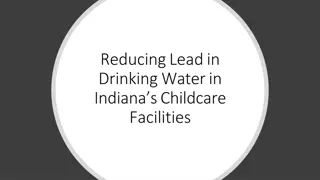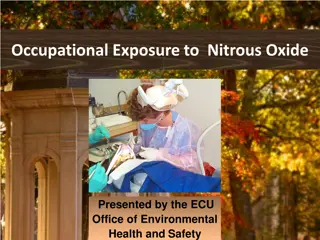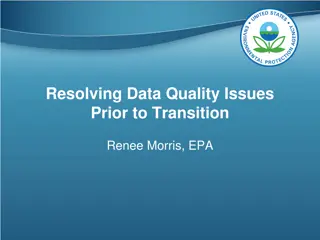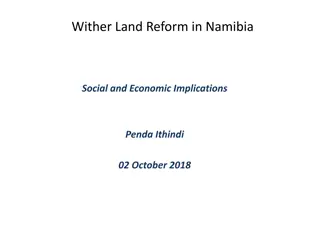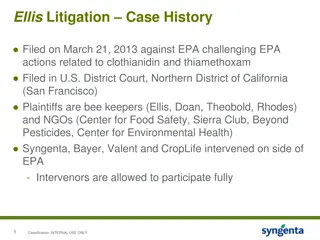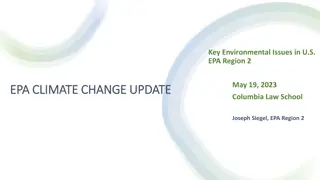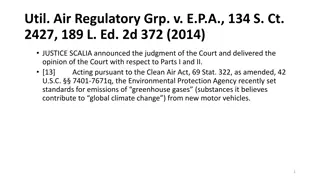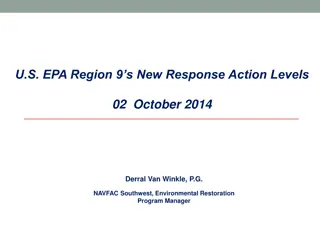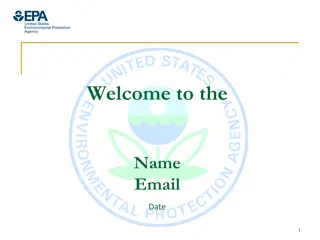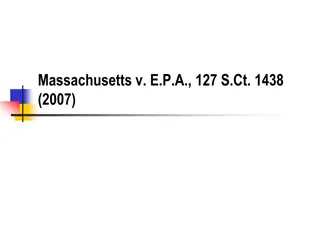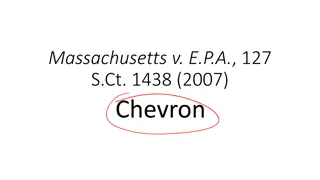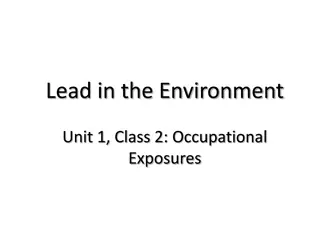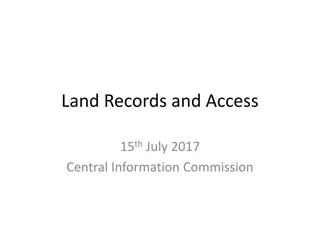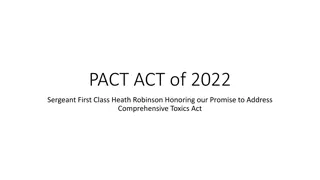EPA Office of Land & Emergency Management Overview on Lead Exposure Reduction
EPA's Office of Land & Emergency Management (OLEM) implements various programs to address lead contamination, focusing on reducing childhood lead exposure through cooperative efforts at federal, state, tribal, and local levels. OLEM supports an integrated approach to addressing multiple lead exposure pathways and actively engages communities in the discovery and cleanup processes. Lead contamination is a significant concern at Superfund sites, with various remedial actions completed, making lead cleanup actions an Agency Priority Goal.
Download Presentation

Please find below an Image/Link to download the presentation.
The content on the website is provided AS IS for your information and personal use only. It may not be sold, licensed, or shared on other websites without obtaining consent from the author.If you encounter any issues during the download, it is possible that the publisher has removed the file from their server.
You are allowed to download the files provided on this website for personal or commercial use, subject to the condition that they are used lawfully. All files are the property of their respective owners.
The content on the website is provided AS IS for your information and personal use only. It may not be sold, licensed, or shared on other websites without obtaining consent from the author.
E N D
Presentation Transcript
Overview of EPA Office of Land & Emergency Management Implementation of the 2018 Federal Action Plan To Reduce Childhood Lead Exposure FY 2019, 3rdQtr Brigid Lowery, Division Director Office of Superfund Remediation & Technology Innovation Children s Health Protection Advisory Committee September 5, 2019 U.S. Environmental Protection Agency
OLEM implements several statutory programs that address lead contamination, including Comprehensive Environmental Response, Compensation, and Liability Act (CERCLA) Resource Conservation and Recovery Act (RCRA) Brownfields (authorized through CERCLA amendment) Office of Land and Emergency Management (OLEM)
OLEMs Strategy to Address Lead Exposure OLEM addresses lead through cooperative efforts of many programs at the federal, state, tribal and local level. OLEM supports an integrated approach to address multiple lead exposure pathways from disparate sources. OLEM programs actively engage the communities throughout the discovery and cleanup process. Community education programs can be effective in reducing exposures. U.S. Environmental Protection Agency
Superfund Sites with Lead Contamination Lead is among the most frequently occurring contaminant at Superfund sites. Almost 900 National Priority List, Deleted and Superfund Alternative Approach sites. Includes mining, smelting operations, battery handlers and metal and chemical processors. Historically, 1,140 remedial actions with lead as a contaminant of concern have been completed. For Fiscal Year 2018 there have been 15 full or partial deletions with lead as a contaminant of concern. Lead cleanup actions are an Agency Priority Goal. U.S. Environmental Protection Agency
Federal Action Plan To Reduce Childhood Lead Exposures and Associated Health Impacts OLEM is responsible for Goal 1: Reduce Children s Exposure to Lead Sources Objective 1.3: Reduce Exposure to Lead in Soil U.S. Environmental Protection Agency
OLEM Supports Goal 3 & 4 Goal 3: Communicate More Effectively with Stakeholders OLEM Human Health Regional Risk Assessor Forum on Risk Communication Goal 4: Support and Conduct Critical Research to Inform Efforts to Reduce Lead Exposures and Related Health Risks. U.S. Environmental Protection Agency
Impact of Superfund Cleanup on Children s Blood Lead Levels Investigated Superfund cleanups and children s blood lead levels through statistical analysis. Used individual level blood lead measurements spanning 2 decades obtained from public health departments in 6 states. Identified the average effect of Superfund site cleanups on children s blood lead levels. Superfund cleanup lowered the risk of elevated blood lead levels by roughly 8 to 18% for children living within 2 kilometers of a site contaminated with lead. https://www.epa.gov/environmental-economics/superfund- cleanups-and-childrens-lead-exposure. U.S. Environmental Protection Agency
Questions? U.S. Environmental Protection Agency




